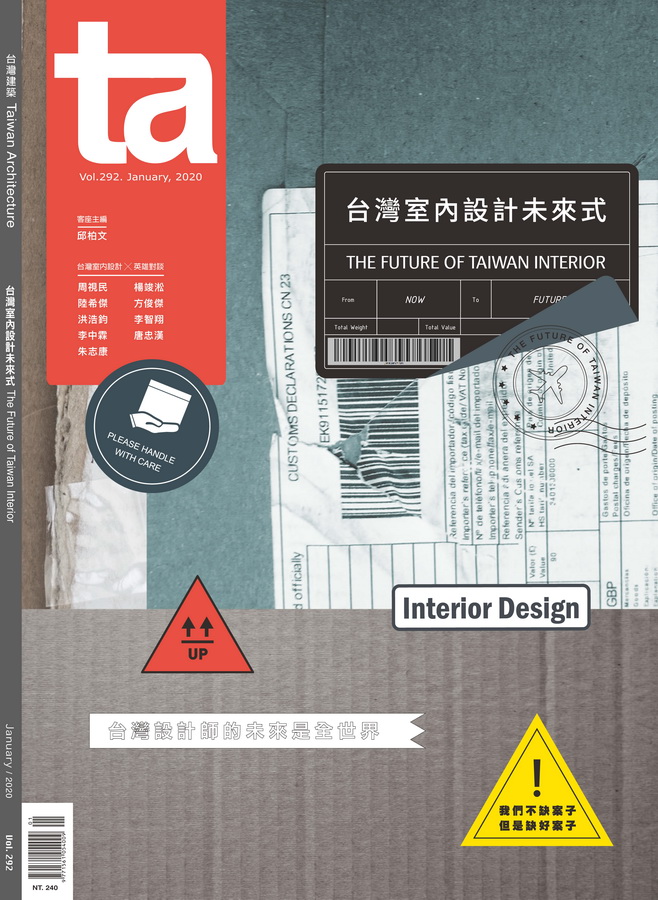墎拉嘿小學Gaw La Heh Primary School
共好×設計 Design for the Common Good 台灣建築雜誌2022年6月 Vol.321

作品檔案2090
墎拉嘿小學Gaw La Heh Primary School
團隊/Team:究究/Gyaw Gyaw
網絡/ Network:克利史東基金會/Curry Stone Foundation;議題 Issue:教育/ Education
編輯/Editing:Shannon Turlington;翻譯/Translation:陳盈棻/Ying-Fen Chen;
翻譯協助/Translational Assistance : Jayde Lin Roberts
究究(Gyaw Gyaw)(音譯)是個位於泰緬邊界的非營利組織,其主要工作是透過建築資助與參與式建造,來支援克倫族教育。自2009年開始,究究執行了30個相關計畫,墎拉嘿(Gaw La Heh)(音譯)小學是其中之一。在計畫執行初期,此小學由六個班級與一個幼稚園組成,共約一百個學生。經由與校長和村長的協議,六個小教室被設計成圍繞一個共用的廣場,並以連續的屋頂相連,試圖藉由這樣的設計引導在地的自然強風,使其圍繞著建築物流動。這個計畫同時還包含有兩間宿舍、廁所和浴室空間,以及修繕後的廚房,這些空間的設計都基於永續和參與式構築的準則。
Gyaw Gyaw is an NGO located at the Thai-Burma border that supports Karen education through architecture and participatory building processes. Gaw La Heh Primary School is one of 30 projects implemented by Gyaw Gyaw since 2009. At the start of the project, the school had approximately 100 students representing six classes and kindergarten. In agreement with the headmaster and the village leader, six small classrooms were designed around a common square connected by a continuous roof shaped to guide the strong winds over and around the buildings. The project also contains two dormitories, toilets, baths, and a renovated kitchen, all built with the principles of sustainable and participatory architecture
理念
濟寶記(Je Po Kee)(音譯)是座位於克倫邦的偏遠村莊,居民穿梭於野生叢林間生活。由於緬甸內戰,過去數十年以來,許多的克倫族人是生活在泰國邊境的自管社區或難民營中。近年由於墎拉嘿小學的受歡迎程度,加上濟寶記村莊的良好營運,吸引了不少克倫族人搬回克倫邦,讓村莊相對蓬勃發展。但由於社區位置偏遠,外部資源有限,建築材料只能利用聯外道路以少數車輛運送。也因此,就地取材的木構技術與材料知識,在社區中依然廣為流傳,究究計畫所需的材料與技術,均是在當地取得,並由村莊自力維護。
Cause
Je Po Kee village is a small remote village located in Karen State where the inhabitants live in and off the jungle. Due to the civil war in Myanmar, a large Karen population has been living across the Thai border in self-organized communities or refugee camps for decades. Because Gaw La Heh is a popular school in a well-run village it is attracting more people to move back to Karen State and is therefore growing. Given the remote nature of the community, access to materials from the outside is limited and can only be delivered by one of the few cars available at a time when the road is accessible. As a result, wood-working skills and material knowledge are well spread among the people and therefore Gyaw Gyaw also works with materials and techniques that can be maintained by the villagers themselves.
方法
作為與在地社區合作的組織,究究一直以來均維持和參與者之間的溝通,讓居民透過投入與學習來回饋,進一步影響未來的設計。但由於區域衝突的持續,這樣的回饋機制無法透過正式系統來進行,而是融入日常的合作與對話中。計畫初期的討論,收集了使用者需求並奠定了設計的發展架構。究究的計畫都是由社區所發起和持續驅動,透過與社區的合作與相互尊重,來滿足參與者的需求。合作模式通常是由發起的社區提供材料,結合在地智慧和人力資源,究究則主持共同設計過程,並提供專業的營造知識。
Method
Being a local organization that works with and within the surrounding communities, Gyaw Gyaw is in continuous dialogue with stakeholders from past, ongoing, and future projects. Stakeholder inputs and lessons learned provide fluid and sustained feedback that influences future design. Within the context of this conflict zone, this feedback mechanism is not in a formalized system but within daily collaboration and conversations. Initial formalized meetings address the needs of the users and set the framework for the design. As these projects are initiated and driven by the recipient communities, Gyaw Gyaw strives to meet the stakeholder’s needs through collaboration and mutual respect: Host communities provide materials, local knowledge and labor while Gyaw Gyaw leads the common design and provides building knowledge.
影響
不主動發起計畫,是究究確保社區和參與者對計畫負責最重要的方式。通常來說,社區清楚自己的需求,他們會帶著計畫概念來尋求究究的協助,究究則與他們共同擬定計畫目的。因此,計畫的所有權從頭到尾都是屬於社區的,社區居民也藉著勞力和在地智慧的展現,加強參與的動能和他們與究究之間的信任感,進而為後續的合作建立基礎。
Impact
The most important way Gyaw Gyaw ensures community and stakeholder accountability is by not initiating the project. The communities are aware of their own needs and they approach Gyaw Gyaw with their project idea. Gyaw Gyaw then collaborates with them to fulfill their project’s goal; thus, from the beginning, the project’s ownership is always held by the community. Additionally, community members contribute with labor and local knowledge, further increasing engagement and mutual trust for future collaboration.
提示
透過這些計畫,究究在地方教育上最大的成果,即是民主參與和勞工權利的實現,並透過與參與者之間密切且相互尊重的合作,來擴大這樣的效應。最終完成的建築物及計畫,不但提升教育的質量與可及性,也強化了學習的網絡。
Takeaways
The largest impact on educational outcomes is the examples Gyaw Gyaw makes by applying democratic principles and labor rights. This is further expanded through close and respectful collaborations with all local stakeholders. The importance of education and access to it is lifted with the buildings themselves and project implementations in the remote villages which also strengthen an educational network.
(完整作品內容請參考《台灣建築》2022年6月號,Vol.321)













